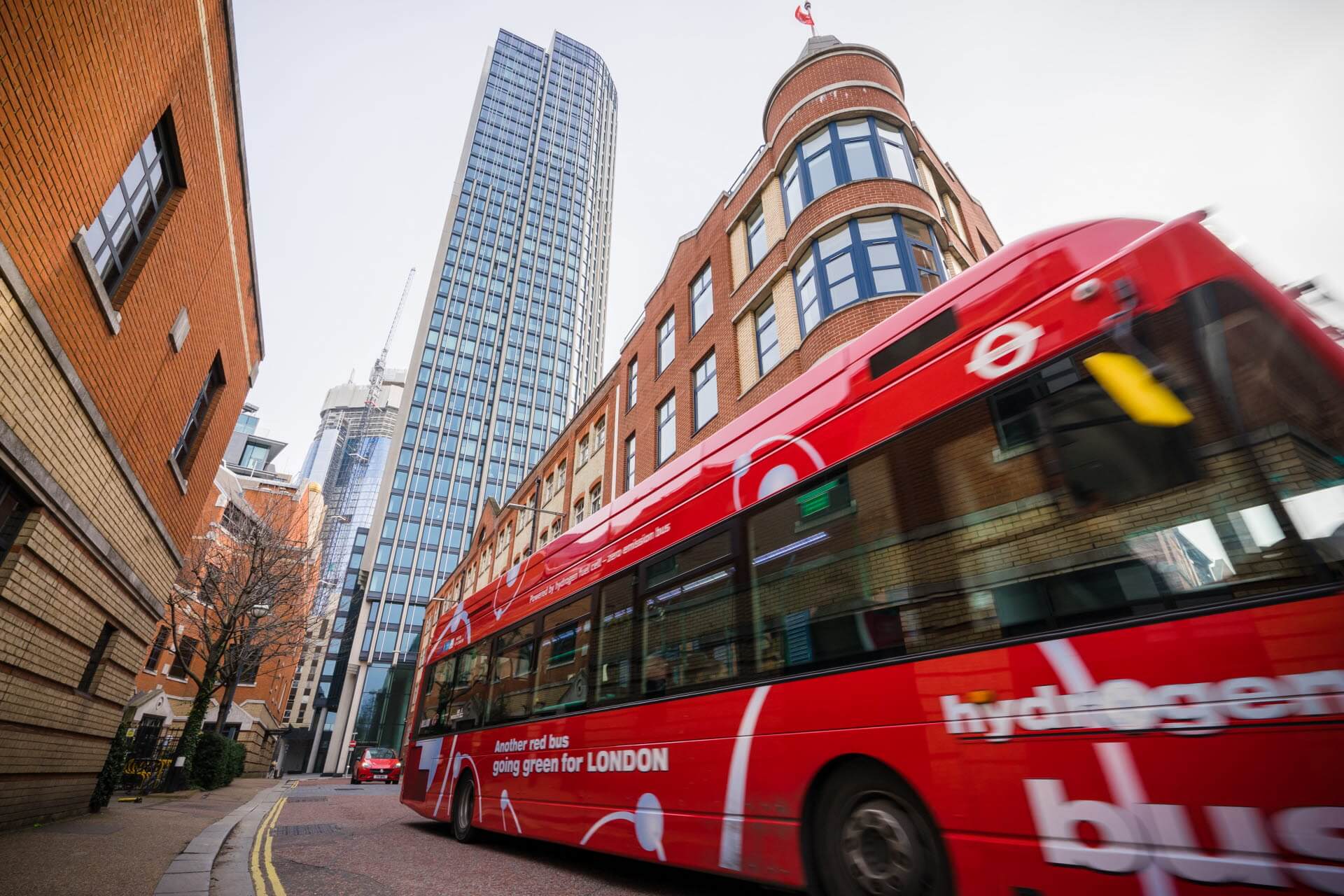Hydrogen Or Battery Buses: Which Is Best For European Cities?

Table of Contents
Environmental Impact: Emissions and Lifecycle Analysis
The environmental performance of both hydrogen and battery electric buses hinges on their lifecycle greenhouse gas (GHG) emissions and impact on local air quality.
Greenhouse Gas Emissions
Assessing the true environmental footprint requires a comprehensive lifecycle analysis, encompassing production, operation, and end-of-life stages.
-
Hydrogen bus emissions: The GHG emissions depend heavily on the hydrogen production method. "Grey" hydrogen, produced from natural gas, has a significant carbon footprint. "Blue" hydrogen, derived from natural gas with carbon capture and storage, offers a lower carbon intensity. "Green" hydrogen, generated through electrolysis powered by renewable energy sources, boasts the lowest emissions. Therefore, the sustainability of hydrogen buses is directly tied to the renewable energy mix used in its production.
-
Battery electric bus emissions: The emissions associated with battery electric buses are primarily determined by the electricity source used for charging. If powered by renewable energy, such as solar or wind power, these buses have remarkably low operational emissions. However, reliance on fossil fuel-based electricity generation offsets these benefits.
-
Tailpipe emissions: Both hydrogen and battery-electric buses achieve near-zero tailpipe emissions, significantly reducing local air pollution compared to diesel counterparts.
Bullet Points:
- Lower tailpipe emissions are a shared advantage, dramatically improving air quality in urban centers.
- The electricity generation mix significantly influences the overall carbon footprint of battery electric buses.
- The carbon footprint of hydrogen production varies dramatically depending on the source.
Air Quality
Beyond CO2, both technologies offer substantial improvements in air quality.
-
Reduced Pollutants: Both hydrogen and battery electric buses drastically reduce emissions of harmful pollutants like nitrogen oxides (NOx) and particulate matter (PM), which severely impact respiratory health. Diesel buses are major contributors to these pollutants, causing significant health problems in urban populations.
-
Localized Pollution: While both offer zero tailpipe emissions, the production and distribution of hydrogen and batteries can still have environmental consequences. A holistic analysis considering these factors is crucial.
Bullet Points:
- Reduced NOx and PM emissions lead to improved public health outcomes.
- The absence of tailpipe emissions significantly minimizes localized air pollution.
- A comprehensive comparison must consider the entire lifecycle's impact on air quality.
Infrastructure and Cost Considerations
The infrastructure requirements and associated costs significantly influence the feasibility and scalability of both technologies.
Hydrogen Infrastructure
Deploying hydrogen buses requires a significant investment in hydrogen refueling infrastructure.
-
Refueling Stations: The scarcity of hydrogen refueling stations in many European cities presents a major hurdle to widespread adoption. Establishing a comprehensive network necessitates considerable upfront investment.
-
Scalability Challenges: The high capital costs and logistical complexities of hydrogen production, storage, and transportation pose significant scalability challenges. Leaks and safety concerns also demand careful consideration.
Bullet Points:
- High initial investment costs for hydrogen refueling stations.
- Limited geographical availability of hydrogen refueling infrastructure.
- Potential safety risks associated with hydrogen storage and transportation.
Battery Electric Infrastructure
The infrastructure needs for battery electric buses are, comparatively, less demanding.
-
Charging Infrastructure: While charging infrastructure still requires investment, the existing electricity grid offers a more readily adaptable system. Overnight charging solutions can efficiently manage energy demands.
-
Scalability: The relative ease of integrating charging stations into existing power grids facilitates a smoother transition and larger-scale deployment.
Bullet Points:
- Lower initial investment costs compared to hydrogen infrastructure.
- Easier integration into existing electricity grids.
- Potential for grid strain during peak demand periods.
Total Cost of Ownership (TCO)
A comprehensive cost assessment needs to consider various factors.
-
Factors Influencing TCO: The purchase price of buses, fuel/electricity costs, maintenance expenses, and operational costs significantly influence TCO. Lifecycle costs, considering the lifespan of the buses and infrastructure, must also be factored in.
-
Government Incentives: Government subsidies and incentives can greatly influence the overall cost competitiveness of both technologies.
Bullet Points:
- Multiple factors influence the total cost of ownership (TCO).
- Government subsidies can significantly impact the financial viability.
- Lifecycle cost analysis provides a more comprehensive long-term perspective.
Operational Performance and Suitability for European Cities
Operational factors play a crucial role in determining suitability for urban environments.
Range and Refueling/Charging Time
Range and refueling/charging speed are critical operational aspects.
-
Range Comparison: Battery electric buses generally offer a shorter range compared to hydrogen buses, especially in demanding urban settings. However, technological advancements continuously increase battery capacity.
-
Refueling/Charging: Hydrogen refueling is significantly faster than battery charging, potentially minimizing operational downtime.
Bullet Points:
- Hydrogen buses offer a longer range compared to battery electric buses, particularly beneficial for longer routes.
- Hydrogen refueling is considerably faster than battery charging, improving operational efficiency.
- Range anxiety remains a consideration for battery-electric bus deployment.
Passenger Capacity and Comfort
Passenger experience is an important factor.
-
Capacity: The passenger capacity is largely comparable between both technologies. Design choices and bus size influence overall capacity.
-
Comfort: Passenger comfort aspects, such as noise levels, ride smoothness, and accessibility features, should be evaluated.
Bullet Points:
- Passenger capacity is generally similar for both bus types, although design variations exist.
- Factors like noise levels and ride comfort can influence passenger experience.
- Accessibility features are crucial for ensuring inclusivity.
Conclusion
This article compared hydrogen and battery electric buses across environmental, infrastructural, operational, and cost dimensions. Both technologies significantly outperform diesel buses in terms of sustainability. The optimal choice hinges on various city-specific factors, including existing infrastructure, renewable energy sources, and budgetary constraints. Battery electric buses currently appear more practical for many European cities due to their lower infrastructure costs and the rapid advancement in battery technology. However, hydrogen buses retain long-term potential, especially in scenarios with abundant renewable energy sources for green hydrogen production.
Call to Action: Selecting the appropriate technology – whether hydrogen or battery buses – is crucial for creating sustainable urban transport systems. Further research and strategic urban planning are vital to identify the best solution for your specific city. Continue exploring hydrogen and battery bus technologies to make well-informed choices and build a greener future for European cities.

Featured Posts
-
 Rihannas Show Stopping Engagement Ring And Chic Red Heels
May 07, 2025
Rihannas Show Stopping Engagement Ring And Chic Red Heels
May 07, 2025 -
 Check The Latest Lotto Plus 1 And Lotto Plus 2 Numbers
May 07, 2025
Check The Latest Lotto Plus 1 And Lotto Plus 2 Numbers
May 07, 2025 -
 Fox Sports 1340 Wnco Cavaliers Vs Spurs Injury Report March 27th Matchup
May 07, 2025
Fox Sports 1340 Wnco Cavaliers Vs Spurs Injury Report March 27th Matchup
May 07, 2025 -
 Lion Electrics Future Uncertain Liquidation A Real Possibility
May 07, 2025
Lion Electrics Future Uncertain Liquidation A Real Possibility
May 07, 2025 -
 Last Minute Audition Zendayas Spider Man Journey Begins
May 07, 2025
Last Minute Audition Zendayas Spider Man Journey Begins
May 07, 2025
Latest Posts
-
 Buen Estado De Central En El Gigante De Arroyito Claves Del Exito
May 08, 2025
Buen Estado De Central En El Gigante De Arroyito Claves Del Exito
May 08, 2025 -
 Central Cordoba Un Analisis Del Desempeno En El Gigante De Arroyito
May 08, 2025
Central Cordoba Un Analisis Del Desempeno En El Gigante De Arroyito
May 08, 2025 -
 Instituto Vs Central Analisis Del Estado De Salud Del Equipo
May 08, 2025
Instituto Vs Central Analisis Del Estado De Salud Del Equipo
May 08, 2025 -
 El Gigante De Arroyito Fortaleza De Central En Cordoba
May 08, 2025
El Gigante De Arroyito Fortaleza De Central En Cordoba
May 08, 2025 -
 Rogue One Stars Surprising Take On Fan Favorite Character
May 08, 2025
Rogue One Stars Surprising Take On Fan Favorite Character
May 08, 2025
